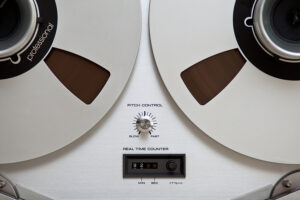How to Use Recordings for Music Lesson Practice
This article details how students can use simple recordings to help with their practice and performance preparation each week and the advantages of doing so!
In the study of any musical instrument at any level, using recordings can be a very beneficial practice tool. The reason is simple: when you are playing or practicing, it’s difficult to get the entire perspective of what you sound like, as you are busy concentrating on air, movements, etc. Recordings give you an external perspective on what you are conveying, and given the wealth of technology at our disposal, it’s a very easy practice tool to use! Here are some ways you can use recordings to help with weekly practice and performance preparation.
You Probably Already Have a Great Recording Device!
When introducing the idea of recording practice run-troughs of different pieces and exercises, some of my personal students have expressed concern over what to use. Many do not realize that most laptops, phones, tablets, and other devices have a built in voice recorder, which is perfect for recording instrumental practice. Recordings used for practice do not have to be equivalent to studio recordings to show detail and give you perspective on phrasing, tone quality, and more.
Using Recordings for Weekly Practice
Though they do not necessarily need to be used for every piece, recordings done throughout the week provide a great way to track progress. Say you have a challenging piece of repertoire or an exercise you want to focus on—record your final run through of each practice on a device and save each day to use as reference. What you will find is that you can track improvements made with your instrument and use the previous day’s recording to point out new areas of difficulty.
Using Recordings for Performance Practice
If you have a performance coming up, I strongly suggest recording yourself a few times beforehand! Another great thing about even turning on a recording device for a run-through is that it simulates the desire performers have for delivering a fluent performance and not stopping for mistakes. In addition to pointing out areas that can be worked on further, there is a slight pressure that comes up in wanting to do your best, but not having any of the nerves that may come up because others are present. In fact, this is a tool that I have used many times in preparing a piece for performance, and I’d say that I always feel more prepared in challenging myself to also do a great recording first.
Using Recordings at Any Level of Study
You don’t need to have completed a certain level of study or be a certain age to have fun with recording your practice! For young beginners, I like to encourage them to record free improvisation, or play back a piece they have mastered so that they can also hear their accomplishment. For a young beginner, it is always fascinating for them to hear themselves playing and can serve as a motivation technique.
Also, for beginners on brass, strings, and woodwinds, recording simple sustained note exercises can give a perspective on how their tone quality and intonation is developing. Through insights gained, music teachers and the student can work towards improvements to progress sound quality.
In Conclusion
I’ve just touched on the few ways recordings can be a fun and insightful component of instrument study. Using these tips as a starting point, you can find ways as a teacher or student to make recordings an active part of your process. Many of my students have found one aspect of recording they really enjoy, like having teacher duets recorded for them to play along with each week, or recording their own compositions. The possibilities are endless, and very valuable for all musicians!
